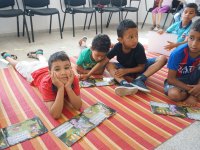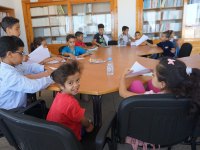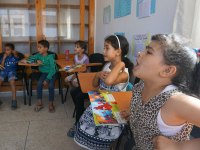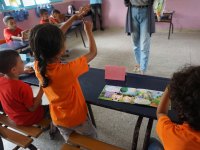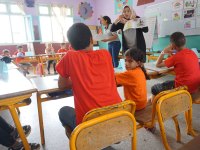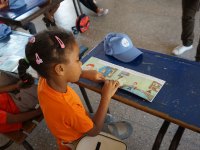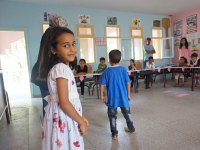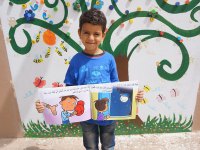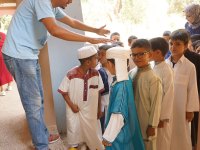Inclusive education reaches diverse Moroccan learners
By Ashley WilliamsOctober 18, 2019
Reading program extends success to summer programs, students with different needs and indigenous learners
RABAT, Morocco — Life started with struggle for Ismail. He was born prematurely, refused to eat and sleep and his growth was stunted. He learned more slowly than other children and was ultimately diagnosed with autism.
Ismail, now 12, is a little older and taller than other soon-to-be second graders in Sale, Morocco, but they welcomed him into the fold. His mother, Manbari Kaoutar, saw a dramatic change last year during his third attempt at first grade when the U.S. Agency for International Development-funded Reading for Success — National Program for Reading rolled out in classrooms nationwide, including her son’s.
That’s when Ismail was finally able to pass the first grade.
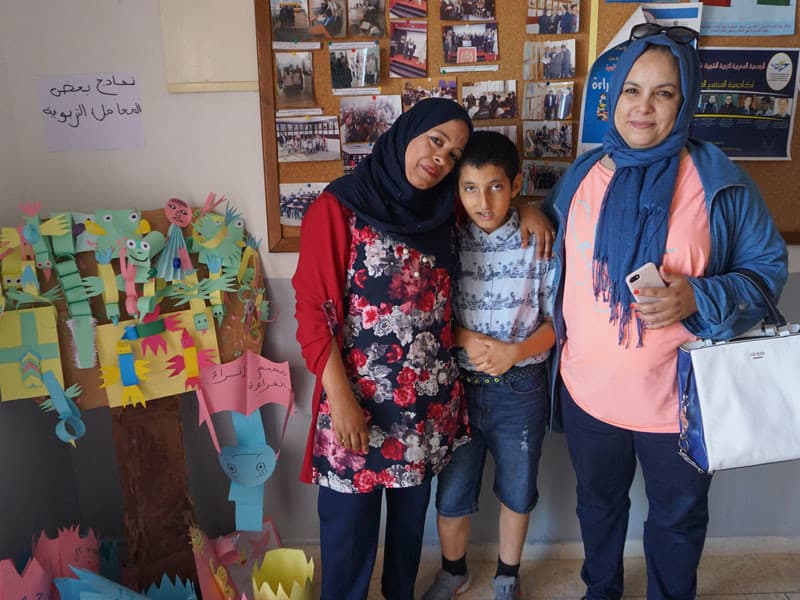
The program is working in partnership with the Government of Morocco to improve Arabic literacy skills by enhancing classroom instruction with interactive, hands-on activities, expanding reading opportunities and improving national learning and assessment systems.
“For my child, the way we learned at school [years ago] is not going to work. He is more active, and he needs a lively manner to learn,” says Kaoutar.
She says that with the colorful new materials and engaging lessons her son can take what he sees on the page or board and make a connection to the meaning for the first time.
Ismail continued the momentum by participating in a project-supported summer reading program to sharpen his skills before second grade. The programs were implemented by local nongovernmental organizations — The Moroccan Association for Youth Education and Forum for Creativity and Communication — that received funding, training and materials from the project. These organizations previously hosted traditional summer camps without an educational component, but both parents and students were excited about the new format.
Children still made crafts, played games and performed plays as they would do in a traditional camp, but they added in activities around reading and making literacy more fun.
Ismail’s improvements from his third year of first grade continued to develop during the month-long reading program, making him a more eager reader. Kaoutar says Ismail now brings his backpack to her when he gets home so they can take out his books and read together.
She’s also found that at the summer program Ismail became attached to the other students for the first time and developed deeper social ties. When she would ask him which community swimming pool he wanted to go to, Ismail would ask to go to the neighborhood where his new friends would be.
This is no small feat in a country with limited resources for children with different learning needs. Part of the magic of the summer reading program is its focus on inclusivity.
Bringing hearing and deaf students together for fun and learning
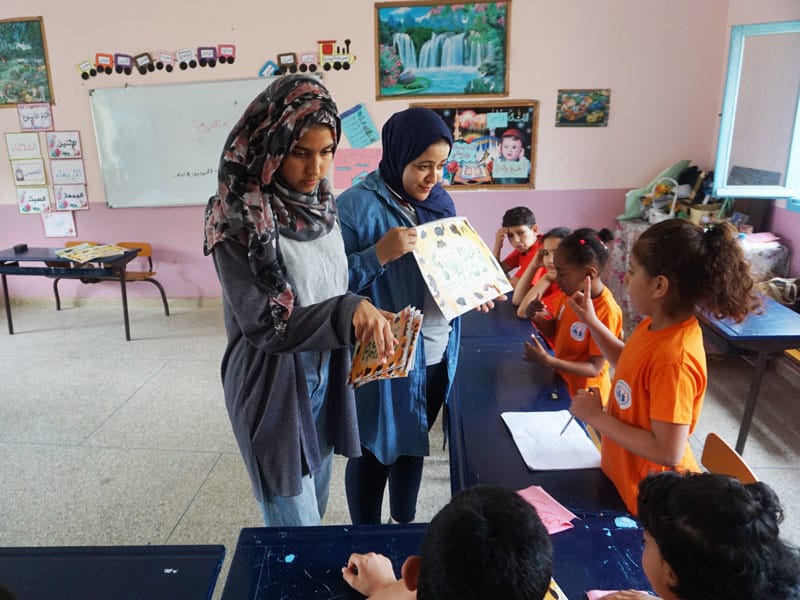
At another summer program location not far from Ismail’s, there were blended sessions catering to both students who are hearing and deaf. This is new territory in Morocco. Students who are deaf typically attend a separate school until grade six and then can go on to vocational training to become hairdressers, mechanics, cooks and other trades.
Facilitators reported that hearing students were so removed from their deaf peers that they didn’t even want to sit next to the children who are deaf during the first week of the program. But the facilitators — one a university student and the other a trained educator fluent in sign language — worked to build bridges through play and learning.
“You can’t find inclusive classrooms [for students who are deaf] in the Moroccan school system. Teachers don’t have a background in sign language or [deaf] inclusive education,” says facilitator Sanaa Tarkhani.
Tarkhani has three siblings who are deaf and, after seeing the lack of support for them in the education system, became certified in sign language and education. When asked what challenges she faces working in a classroom with deaf and hearing students, she says there are none. She’s accustomed to operating simultaneously for people living in noisy and silent worlds.
But her co-facilitator, Fatima Rizki, saw it a little differently. Rizki, 22, is a university student studying education and she is not fluent in sign language nor does she have the same personal tie to it as Tarkhani.
She notes that sometimes the students who a
re deaf would tap on their desks or make noises they can’t hear and disrupt the other students.
“The main challenge is engaging all of the students while I’m reading a book or a story. I have to read for all of them,” says Rizki.
To ensure summer program staff like Rizki had the skills they needed to support both hearing and deaf students, the project trained reading program facilitators using a project-designed four-week curriculum. Joanie Cohen, Senior Project Director for Creative Associates International, says involving facilitators fluent in sign changed the dynamic of the training.
“The inclusion of deaf educators absolutely made this so special,” says Cohen. “In our after-training appreciations and reflections, many participants mentioned how much the deaf educators enriched their experiences and made them think differently about educating young children.”
Supporting parents and indigenous communities
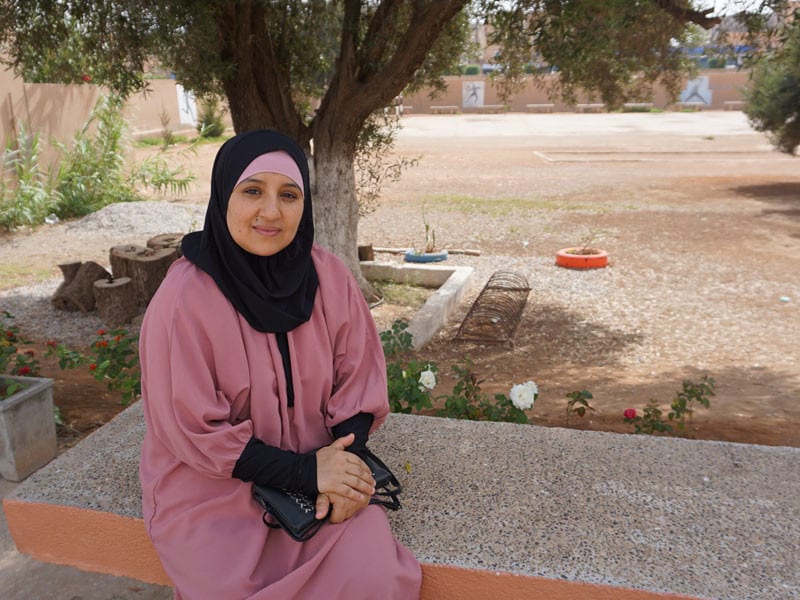
In addition to being inclusive of students with varying needs and abilities, the program also operated in the south of Morocco with Amazigh indigenous people living in Tiznit. Given that their native language is often what they speak at home before enrolling in school, some Amazigh early grade readers struggle entering a system based on Classical Arabic.
Hafida Aaouini’s 7-year-old son Mouad only used Amazigh, but after a year in a National Program for Reading-supported school and a few weeks of the summer reading program, he is comfortable with Classical Arabic.
“Classical Arabic is the language for communication … It’s good for him to speak Amazigh to communicate with his community, but it’s good for him to learn Arabic to go further,” says Aaouini.
She can see a stark difference between Mouad and her older children that didn’t have the methodology the project implements. She says that reading at home is not common in her culture, but now Mouad is asking for a story every day and wants to bring his books to the beach.
In an effort to cultivate a holistic culture of reading outside the classroom, the reading programs targeted classroom facilitators and parents in addition to students. Parents were trained on ways to get involved in their children’s reading at the beginning of the program.
“We learned with our children,” said Aaouini “We didn’t have a chance as parents to be trained before. This training simplified the way to teach your child how to read and they give you tools with short stories and big images.”
As the summer program came to a close, parents and students reported being more prepared for the term ahead and prepared to succeed in literacy development.
With reporting by Mounya El Asri
Photos by Ashley Williams


